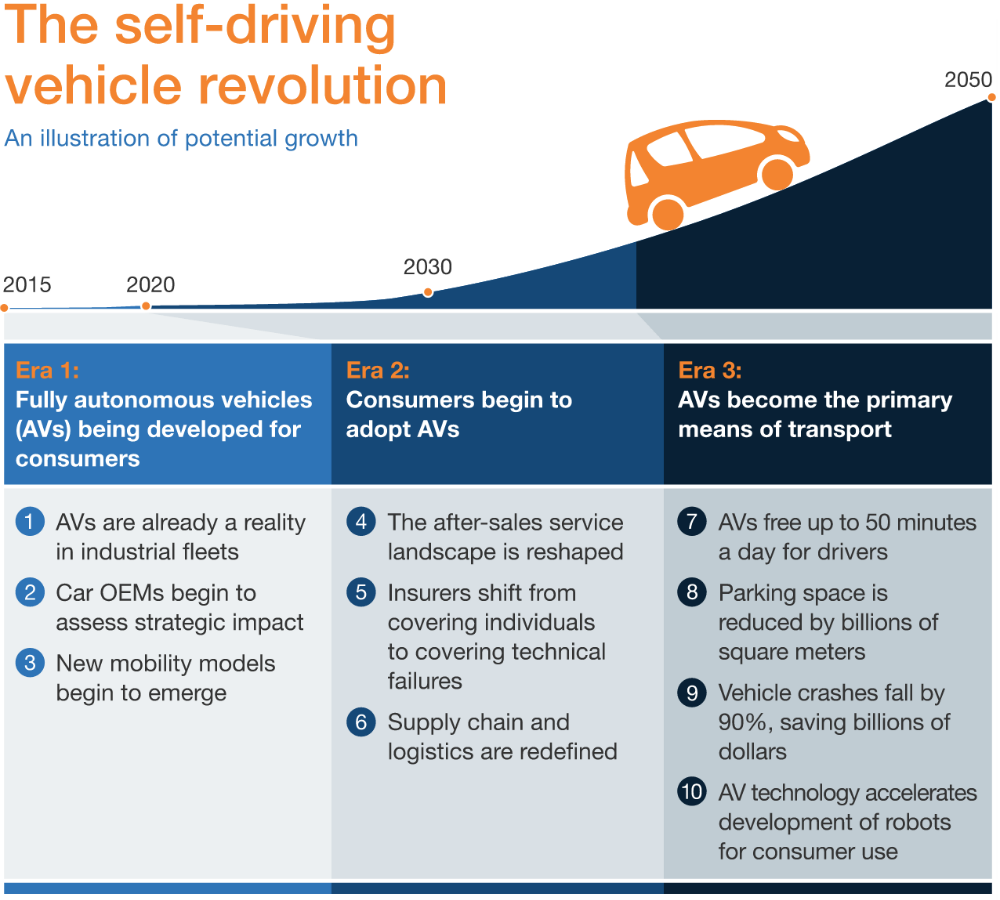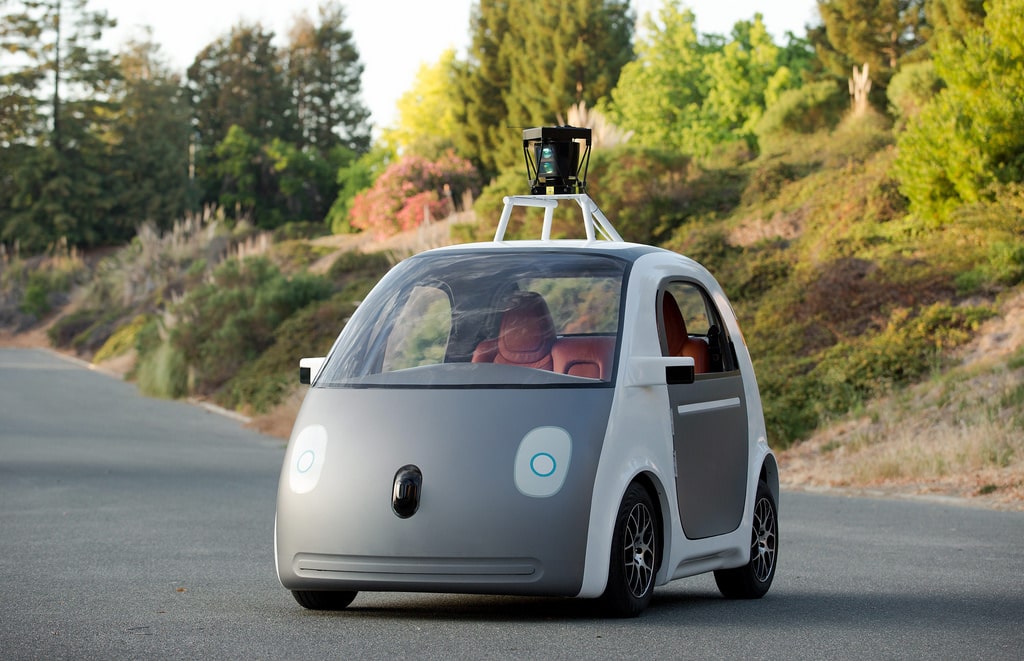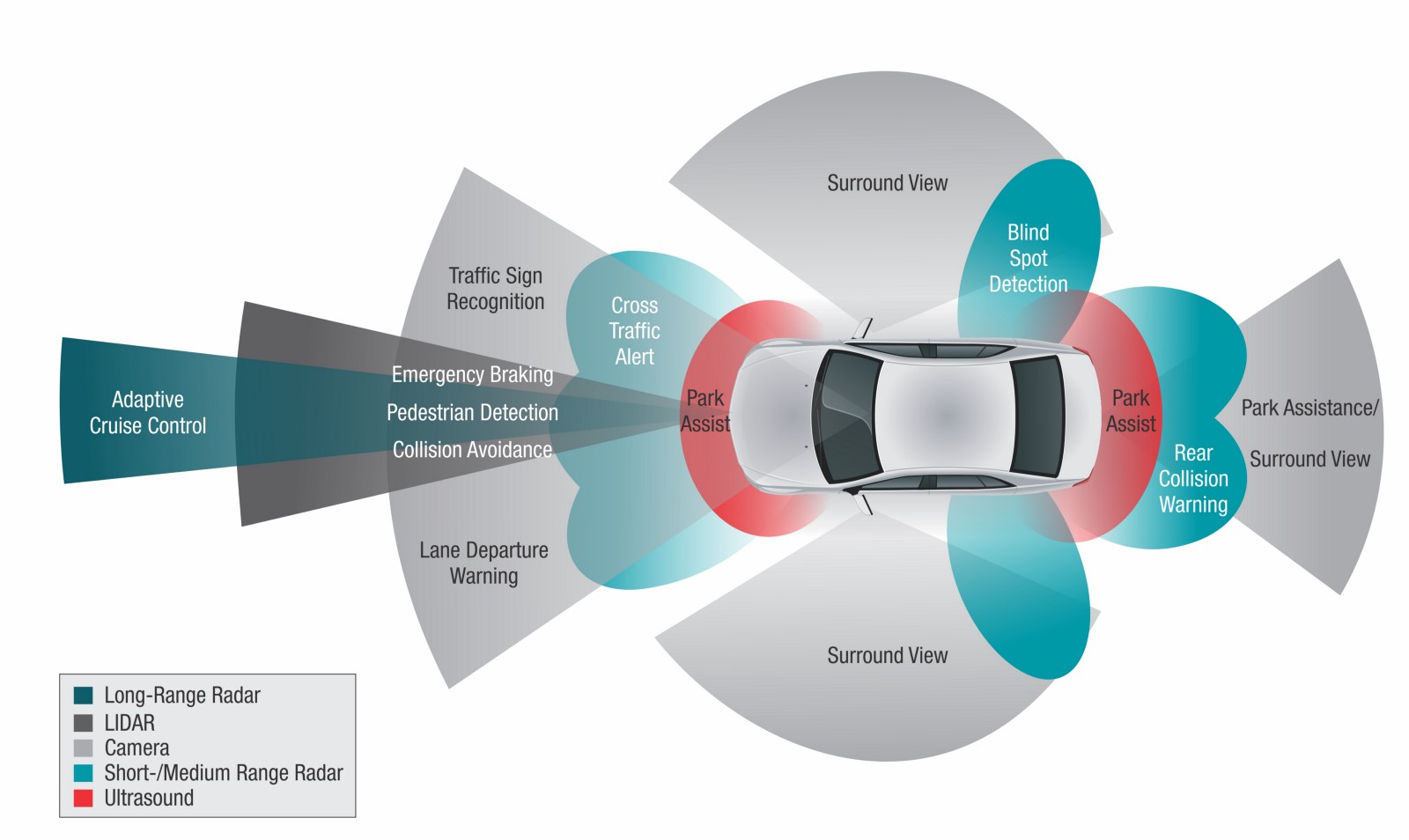Self driving the way to parking solutions
Self driving cars have long been part of people's futuristic visions of society. Although once reserved for sci-fi novels and films, like so many other progressive technological concepts, they've slowly fulfilled themselves as a real-life invention.
As new ideas emerge, companies who have their finger on the pulse of technological developments could stand to reap rewards for their customers – and where some companies will rise for their welcoming of high-tech solutions, others will fall for their lack of participation.
At Park IT, our goal is to make use of all the available technology to help our customers revolutionise the airport parking experience.
So whilst the reality of self driving cars may still seem far away, now's the time to look to the future and ask, what could they mean for airport car parking solutions?

Imagine a world where self-driving cars were the norm. It'd undoubtedly have an enormous impact on many parts of our day to day life.
The original stimulus for inventors was to use self-driving as a means to solve practical problems with conventional driving, citing that as many as 94% of crashes are caused by human error.
A case study shows that;
The Automated Vehicle Crash Rate Comparison Using Naturalistic Data supply data to indicate driverless vehicles could mean a vastly reduced crash rate in incidents of all types.
Whilst safety has always been the primary concern for designers (and also the biggest point of contention for sceptics), there are other benefits to autonomous cars too, many of which relate to their ability to refine our driving habits.
One such benefit lies in parking efficiency, where autonomous cars could potentially save space, time and money for all involved.
So how could driverless cars help to contribute to a smart parking system?
Firstly, consider proximity to the airport. What if holiday makers could drop their car off at the airport and leave it to drive off and park itself in an available space – either in a parking lot or roadside.
The traveller can get right to the airport but their car doesn't need to position itself close by. It could find a space that may be miles away. Returning from vacation, care-free passengers could walk out of the arrivals exit to find their car ready and waiting – having driven itself from wherever it was.
This may sound far-fetched but it could be a very practical step in reducing square footage for developers who need to consider alternatives to space-hungry car parks. The Nissan Leaf was the first commercial vehicle to be equipped with automatic parking control is this function will be one of the first features to be rolled out to many more vehicles before the end of 2017.

And then there's parking space itself. Self-driving cars can park very, very close together. There's no need to leave room for a person exiting the vehicle. What's more, the whole process is automated, meaning laser guided precision in lining up cars carefully.
Many people ask, are robots trustworthy enough?
But we already trust them with complex tasks such as performing surgical operations or engineering intricate components on production lines across the world. So surely we can trust them to park a car, and precisely too.
The minimum guidelines for a UK parking space is 2.4m x 4.8m. Considering how closely a robotic car can park, as well as the lack of need for passengers to get out, we could see this reduced by up to a quarter. Just think of what that could mean for capacity in airport carparks.
The legal implications for self driving cars
.jpg?auto=format)
Where new technologies become a part of everyday life, new legislation will inevitably be created around them. A number of legislative processes have already been instigated to meet the demands of regulating robotic technology such as drones, self-driving cars and other automated vehicles.
Back in 2013, when cars like the Nissan Leaf were developed to park themselves, the UK and most of Europe came up against obstacles within existing laws.
For example, in Britain, the Highway Code states that motorists must not leave a vehicle unattended with the engine running.
So where does that leave a car that drives itself? Could this render the scenario of a car driving itself off to a parking spot impossible?
And what if an accident does occur when self-driving cars park next to each other? In the case of airport parking (and in general) who would be liable for the accident and whose insurance would cover it? The car owner? The parking company? The manufacturer?
Transport Secretary Chris Grayling has claimed that;

The UK will become a 'world leader' of driverless cars and progress has been made with a bill already drafted to cover insurance claims for self-driving vehicle owners. Insurers are getting on board too – with 11 companies joining forces to discuss a framework for autonomous cars.
Then there's the issue of security. In our industry a driver will leave their car and keys with the parking company who have strict procedures in place to prevent loss or theft.
But what about electronic, automated vehicles? It's not unreasonable to believe the risk of hacking could present itself – leaving cars open to theft, or worse, enabling criminals to use one or multiple cars for terroristic purposes.
The government have already begun addressing many of these issues and in August this year published the latest legislation in paving the way for driverless cars. This includes a set of "Key principles of vehicle cyber security for connected and automated vehicles" which outline security procedures for designers, manufacturers and sellers to reduce or eliminate the chance of computerised hacking.
Google's Self Driving Car

When will fully autonomous
Staying informed about the development of driverless technology in the next few years will be vital for parking companies.
So what is the current state of play? When will driverless cars become a reality and will the public want, or be able to use them in everyday life?
It's no surprise that global giant Google is at the forefront of autonomous vehicle technology. Google have been developing their driverless car since 2009 and they are a common site around the company's HQ in Mountain View, California.
How does Google's driverless car work? The vehicle uses a combination of cameras, radars and laser sensors to gain information from the world around it. Google's software then processes that information and uses it to inform the way the car drives, as this youtube video explains:
When will fully autonomous cars become a reality?
Google is not the only company pioneering driverless technology. A number of major companies have unveiled plans for commercialisation; Uber, Tesla, Baidu, Ford, and General Motors have all announced plans to commercialise self-driving cars.
But for any of them, gaining an accurate estimate as to when fully driverless cars will be commercially available is difficult.
The task at hand is vast and complex – from manufacturing to research and development and legislation.
In 2012, Google founder Sergey Brin stated in an official Google blog that Google's self-driving car would be available in 2017. In 2014, this was then updated by the new project director Chris Urmson to suggest the date as being more like 2017 to 2020.

Other companies, like Tesla, led by CEO Elon Musk have similar dates pencilled in. They forecast a major test in November or December of this year, with Elon Musk saying in a TED Talk that "we should be able to go from a parking lot in California to a parking lot in New York, no controls touched at any point during the entire journey."
A conservative prediction researched by David Galland from Forbes discussed the practical issues involved with commercialisation – the raw materials, the time for investment, the geographical roll-out – and suggested that 10 million self-driving cars would be on the road by 2020. Compared to the 1.4 billion cars already on the roads today, that's a small amount, but it will still see a major influx into many major capitals.

In the US, Google's self-driving car scheme (now know as Waymo) have launched the 'early rider program', which is a public trial of their self-driving cars.
The main scheme is being trialled in Phoenix, Arizona, but there are 25,000 simulated miles being travelled every week as well as physical tests in 3 US locations.
Meanwhile, Tesla claim they've logged 100 million simulated miles. These simulated tests take real-world variables into account in advanced computer models which test driverless car function on roads across the world.
Although a lot of testing still takes place away from public roads, driverless car projects are getting rolling in the real world, even if they've a way to go to make their commercial breakthrough.
The wheels are in motion for driverless vehicles to appear in the commercial market by 2020 and it's likely they'll have been prevalent in high-tech zones in the US and Japan, as well as London and other major capitals, for a couple of years before then.
Most importantly, do we want self driving cars?
In order to prepare for the future, not only does the parking industry need to ask when driverless cars are coming – but if the general public will actually want and be able to use them as part of everyday life.
You can only halt the tide of innovation for so long and although many individuals have formerly shunned automatic cars for their safety concerns, more and more studies are showing that they really are as safe and efficient as futurists have touted them to be.
Furthermore, a recent statement issued by the government saying that all petrol and diesel cars will be banned by 2040 intensifies our need to consider new automotive innovations seriously. Not only will this new generation of cars be autonomous but crucially, they will be fully electric.

There are a huge number of ways in which driverless cars could hugely benefit society and improve our roads:
Elimination of human error
Driverless cars could all but erase the potential of crashes caused by human error or driver distraction. Eventually, cars could become much the same as train carriages.
Fitness to drive
Tiredness and drinking are big contributors to accidents in the UK. But if the car could do the driving for you, you'd pose no risk to people on the road.
Overnighters
Driverless cars could be a huge advantage to people needing to make long journeys, or commercial drivers. You could let the car take over and catch 40 winks without any risk to yourself or others.
Queue busting
In congested areas or during busy periods, provided all cars were driverless, they could be automatically controlled to drive at the best speed and proximity to aid the flow of traffic.
Navigation
No longer would error or panic be caused by misinterpreting the sat nav and taking a wrong turn. The car and navigations systems could seamlessly communicate.
Driving in adverse weather
Sensory technology can excel our own. Driverless cars would perform better when analysing road conditions.
Faster traffic.
With driverless cars able to judge proximity, precise braking distance and road conditions, speed limits could be increased.
Freedom for the less mobile
Driverless cars could be a revolutionary development for older people, those with conditions that currently prevent them from driving, or disabled people.
Fuel efficiency
Settings could be built into the driving patterns of driverless cars to calculate the most fuel efficient way of driving.
Parking proficiency
With laser guided sensors, car park bumps could become a thing of the past. Not to mention the potential for increased capacity in car parks and the integration of driverless cars into a smart parking system at airports and other public places.
Insurance costs reduced.
With a lower risk of human error at the wheel, could driverless cars see a significant reduction in insurance costs?
Dangerous tasks.
In disastrous incidents, automated cars could be used to drive into dangerous zones to secure survivors. In the military, where robots are already taking a hold over formerly human-operated tasks, driverless cars could transport people and equipment into and out of conflict zones.
.jpg?auto=format)
But it's not an entirely positive outlook, with plenty of issues still to be addressed:
Safety
Above all else, the public will want to be confident that driverless cars will keep them safe. Designers are evaluating this all the time and repeatedly assert that by the time they are actually rolled out, driverless cars will be safer than our current vehicles. But the fact is, no one yet really knows how driverless cars will function together on our busy streets.
Cost
Technology doesn't come cheap, and it may be a long time before cars are affordable to the everyday commuter.
Job loss for humans
What could driverless vehicles mean for commercial drivers?
Glitches
In general, driverless vehicles should improve road safety. But when computer glitches do happen, the results could be disastrous.
Liability
Who will be responsible if cars do crash and how will insurance providers handle pay outs?
Security
Hacking, privacy concerns and digital safety issues are still exhaustive and there are serious concerns about driverless vehicles being exploited by terrorists. If hackers could control multiple cars at the same time, the risks could be catastrophic.
Adverse weather
Although sensors could improve driving in bad weather, some conditions like rain or snow could interfere with the laser sensors or cameras automated vehicles rely on.
Dumbing down
A big concern is that with the prevalence of automated vehicles, our manual driving skills will diminish.
Driving attitudes
Knowing you can get into your car tired or drunk could promote laziness and travelling in unfit states.
Ethical issues
Faced with hitting an animal or swerving to avoid it, what would a driverless vehicle decide? Is it possible to programme ethical decisions that would normally be based on individual human choice?
Shared Thoughts from Industry Experts

British Parking Association were kind enough to share their opinion and thoughts with regards to self driving cars and the parking industry. Here is what they had to say;
"The future of parking could change rapidly over the coming years. New products and services led by a combination of customer demand and policy will be a disruptive influence on many aspects of parking."
"Autonomous vehicles, technology that reduces emissions, new ways of capturing and analysing data, or even a shift in the way we view vehicle ownership all present challenges and opportunities that the parking profession needs to consider, understand and respond to."
Driverless cars were once purely a figment of the imagination, something believed in only by the most far-seeing inventors or authors. But now, they're on the brink of mainstream commercialisation.
Driverless cars – the future of airport parking solutions?

The debate surrounding them is ongoing as it concerns so many areas of science and ethics. Slowly, problems are being ironed out and manufacturer's reassurances are beginning to synchronize with governmental demands – smoothing the road the future of driverless cars.
The benefits associated with robotic cars are certainly starting to create a buzz around the parking industry. There may be disadvantages but despite their short term impacts these will be solvable in time and could be vastly offset by the long-term advantages.
Whether it grinds your gears or not, driverless cars are coming and it won't be long before we start seeing them on the roads – and in our airport car parks.
At Park IT, we're making sure that when the future arrives, we're prepared to get on board with this exciting new technology to improve efficiency and build better airport car parking solutions. We hope you'll join us for the ride!
